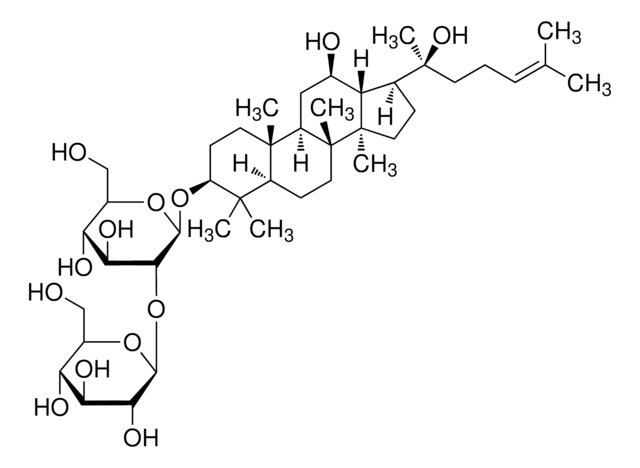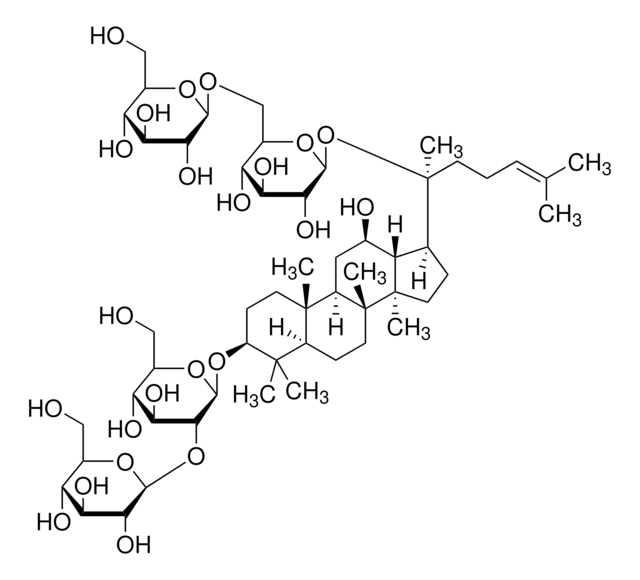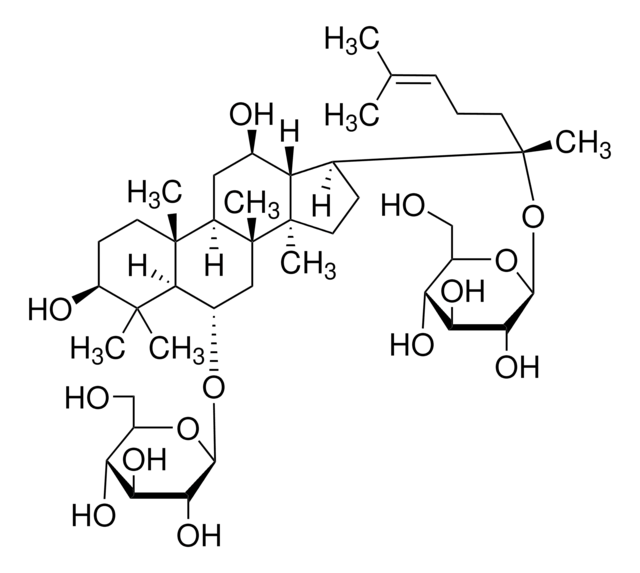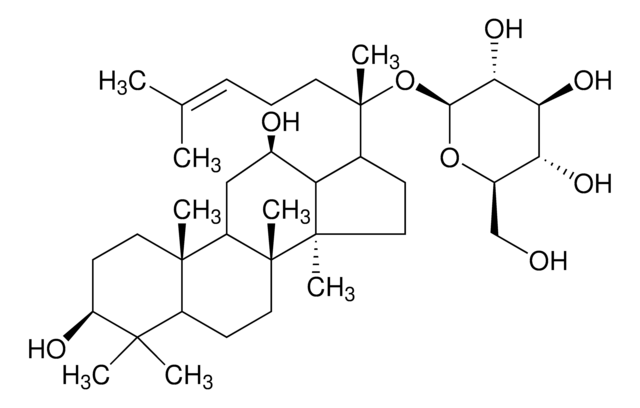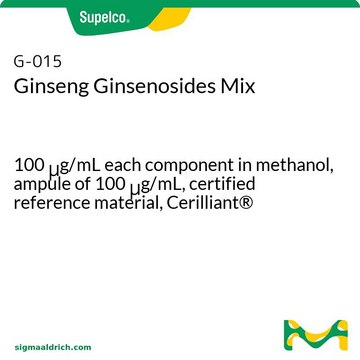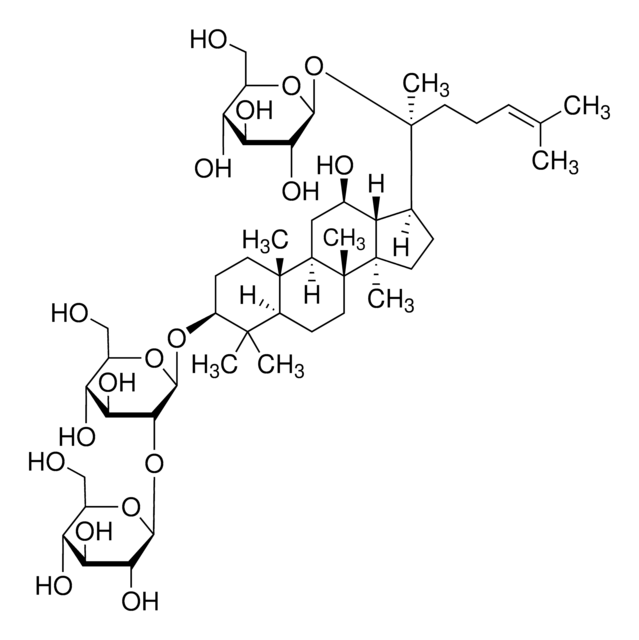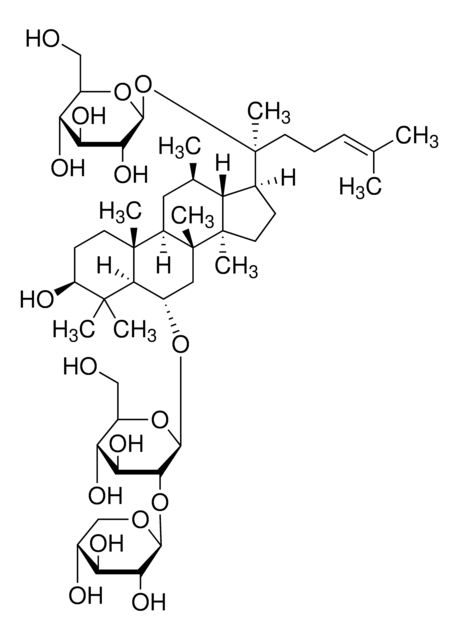Kluczowe dokumenty
68317
Ginsenoside Rg1
analytical standard
Synonim(y):
(3β,6α,12β)-3,12-Dihydroxydammar-24-ene-6,20-diyl bis-β-D-glucopyranoside, Ginsenoside A2, Ginsenoside g1, Panaxoside A, Panaxoside Rg1, Sanchinoside C1, Sanchinoside Rg1
About This Item
Polecane produkty
klasa czystości
analytical standard
Poziom jakości
Próba
≥90% (HPLC)
okres trwałości
limited shelf life, expiry date on the label
metody
HPLC: suitable
gas chromatography (GC): suitable
Zastosowanie
food and beverages
Format
neat
ciąg SMILES
C[C@]12[C@@](C[C@H]([C@@]3([H])[C@]2(CC[C@]3([H])[C@@](CCC=C(C)C)(C)O[C@@H]4O[C@@H]([C@H]([C@@H]([C@H]4O)O)O)CO)C)O)([H])[C@@]5([C@@](C(C)([C@H](CC5)O)C)([H])[C@H](C1)O[C@@H]6O[C@@H]([C@H]([C@@H]([C@H]6O)O)O)CO)C
InChI
1S/C42H72O14/c1-20(2)10-9-13-42(8,56-37-34(52)32(50)30(48)25(19-44)55-37)21-11-15-40(6)28(21)22(45)16-26-39(5)14-12-27(46)38(3,4)35(39)23(17-41(26,40)7)53-36-33(51)31(49)29(47)24(18-43)54-36/h10,21-37,43-52H,9,11-19H2,1-8H3/t21-,22+,23-,24+,25+,26+,27-,28-,29+,30+,31-,32-,33+,34+,35-,36+,37-,39+,40+,41+,42-/m0/s1
Klucz InChI
YURJSTAIMNSZAE-HHNZYBFYSA-N
Szukasz podobnych produktów? Odwiedź Przewodnik dotyczący porównywania produktów
Opis ogólny
Zastosowanie
Inne uwagi
Zastosowanie
Hasło ostrzegawcze
Warning
Zwroty wskazujące rodzaj zagrożenia
Klasyfikacja zagrożeń
Acute Tox. 4 Oral
Kod klasy składowania
11 - Combustible Solids
Klasa zagrożenia wodnego (WGK)
WGK 3
Temperatura zapłonu (°F)
Not applicable
Temperatura zapłonu (°C)
Not applicable
Środki ochrony indywidualnej
dust mask type N95 (US), Eyeshields, Gloves
Wybierz jedną z najnowszych wersji:
Masz już ten produkt?
Dokumenty związane z niedawno zakupionymi produktami zostały zamieszczone w Bibliotece dokumentów.
Klienci oglądali również te produkty
Nasz zespół naukowców ma doświadczenie we wszystkich obszarach badań, w tym w naukach przyrodniczych, materiałoznawstwie, syntezie chemicznej, chromatografii, analityce i wielu innych dziedzinach.
Skontaktuj się z zespołem ds. pomocy technicznej